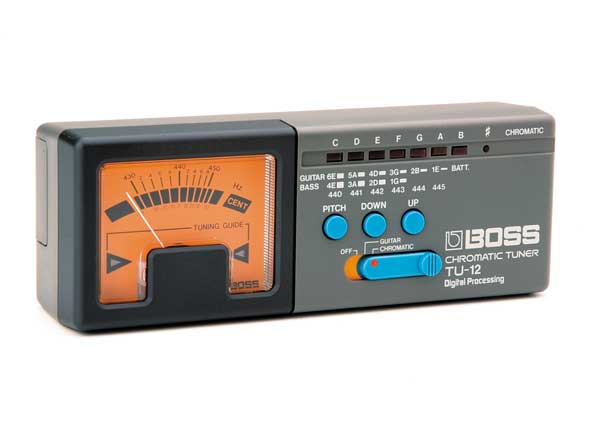
Tuning Your Instrument
Before you start each lesson or practice session you will need to tune your instrument. If it is out of tune everything you play will sound incorrect even though you are playing the correct notes.
Electronic Tuner

Electronic Tuner
The easiest and most accurate way to tune your instrument is by using an electronic tuner. An electronic tuner allows you to tune each string by indicating whether the notes are sharp (too high) or flat (too low). There are several kinds of electronic tuners and most are relatively inexpensive and simple to operate. These are available as a standalone device from a music store or as a smartphone app.
If you have an electric instrument and a standalone tuner, you can plug into it, as you would an amplifier. If you have an acoustic instrument, use the tuner's built-in microphone instead. If using a smartphone app, we recommend Cleartune by BitCount (Android/iOS) or PolyTune by TC Electronic (iOS). There are many free options as well.
Tuning accurately using other methods is difficult for beginners and can take a long time to master. We recommend you purchase an electronic tuner, particularly if you do not have a teacher or a friend who can tune your instrument for you. Also if your instrument is way out of tune you can always take it to a music store so they can tune it for you. Once your instrument has been tuned correctly it should only need minor adjustments before each practice session.